Take one look at the faded photograph of the charming villa above and you might think this a story about Oxford house prices. Far from it. It’s the tale of John Towle, the Victorian mill owner turned architect who created this unconventional dwelling – a house of cards I suppose one might say, for it is constructed almost entirely from paper. Not the ‘huff and puff and blow your house down’ kind of paper production of ‘The Three Little Pigs’. But a residence that stood strong and upright from when it went up in 1844 until it was finally demolished in 1996. That’s an amazing lifespan for any building. Never mind one made of paper.
And so it is with some excitement, as I wend my way through the now subsiding floods of South Oxford to find the spot where it once stood, that I reflect on the life of the Oxford eccentric who erected this remarkable edifice. A self-made man in constant battle with the authorities, a non-conformist and champion of working men’s rights, he was also a building evangelist who dared to oppose the introduction of a new railway line into Oxford, built by none other than Isambard Kingdom Brunel himself.
Towle came to Oxford from Nottinghamshire to take up a job at Christ Church as a college servant about 1818. It wasn’t long before his entrepreneurial streak began to show itself, first selling stockings and textiles on the side (which got him into trouble with the University) and then working as a tailor (which angered the city, as it was a trade open only to freemen of the Corporation, which he was not.) His life continued to be adversarial. He got himself elected to the local council without being eligible (the first non-conformist Alderman to do so). And when he was voted in as Mayor of Oxford in 1856, he refused to swear the oath of allegiance to the Vice Chancellor of the University, an outdated procedure (dropped soon after) dating from one of the more serious 14th century skirmishes between town and gown. Riding about on a white horse (and into meetings for which he refused to dis-mount) he endeared himself to the less powerful by encouraging protest for universal suffrage, but not to the authorities by calling them ‘a family clique and tyrants’.
This was the man who by the late 1830’s had taken over as proprietor of Hinksey Paper Mill. The mill then stood on the banks of the stream that runs between what is now The Church of Jesus Christ of Later-day Saints and the depot from where floats depart on their daily rounds for Milk and More opposite Redbridge Recycling Centre. It’s an unloved area these days, a place of car parks, derelict buildings and a lonely looking Travelodge. Even the colourful outdoor showcase for the now defunct Go Outdoors depot in front of what was – until it closed at the end of last summer – the city’s only campsite, was being dismantled when I visited. But in Towle’s day this area was wide open fields through which the Thames and its tributaries flowed and often flooded as they still do.
Despite this, in 1844 it was decided on as the route for the new Great Western Railway connecting Oxford for the first time to London by train via Didcot. Gravel was used to build an embankment on which to bring the track over the flood plain, into Oxford’s first station on the corner of Western Road and Marlborough Road (the long straight street of houses a reminder of what it once was before the line was moved and the station built in its current position on the Botley Rd). It is unclear why Towle disliked the idea of the railway so much. Maybe he wanted compensation for diminishing the value of his property, or maybe he just wanted to be difficult. But object he did. And he did so by building a house on the spot where a bridge was to take the road traffic over the train track, a house described by the railway inspector General Paisley as ‘of timber framework covered with brown paper, with a fireplace in it’. The materials were easily brought over from Towle’s paper mill across the way, and being higher up gave it protection from any rising water levels.
At that time paper roofs were not as unusual as one might think. Between the late 1700’s and mid 18th century there are numerous examples of their use, especially in Oxfordshire where the paper industry that served the printing trade flourished. A row of cottages, their paper roofs now concealed under felt coverings still stand in Eynsham, near where a Mr Swann had a paper making factory. The roofs were made by dipping sheets of paper into a solution of three parts tar to one part pitch, then laid out to dry between layers of grease to stop them from sticking, before being placed on the roof in layers of varying thickness. Because they were light, they needed only minimal support, so the roofs tended to be low, almost flat, and topped with ashes and sand. Nails weren’t needed as the tar was a strong enough glue to keep the thing in place. Certainly cheaper, the glossy blue-black appearance of the finished product was also considered aesthetically pleasing. A paper roof was even used by Nash for an outbuilding at Buckingham Palace!
What was far less common was the use of paper as it was in Towle’s house, for erecting the walls too. When Rob Kinchin-Smith from the Oxford Archaeological Unit surveyed the place before its final demolition in 1996, he records that Paisley House as it became known (the same name as that Railway Inspector, so perhaps Towle did get his compensation) used two types of paper on the roof, and five different forms of cardboard and paper cladding on its walls. And from its two roomed beginnings it was extended in nine separate phases over a period of 30 years, until it became the five bedroomed villa with veranda and conservatory that you see above.
Towle’s paper house did not stop the opening of the railway on 12 June 1844. Though it did postpone the building of the proposed bridge, and a level crossing had to be used to carry traffic across it for some time. But Towle continued to live there quite happily with his wife until his death in 1885. He is buried in the Wesleyan Church on New Inn Hall Street. The cottage then served the Turner family for another one hundred years, remaining by all accounts both surprisingly waterproof and cosy. Grade 11 listed, it was a fallen tree that finally bought the roof down.
There’s nothing left of it today. Standing on the spot under the bridge by the railway track as the London express train thunders past, the only edifice now is a stack of old palates. The milkman I talked to and the railway engineer checking the line for water, had never heard of Towle’s paper house, though they were pleased to learn why the area they had always known as Towle’s Mill was so named. It is a forlorn place to visit, and I wouldn’t recommend it.
There’s is however a plaque dedicated to John Towle on a brick wall leading to a modern close named after him, not far away off Wytham Road. It skirts the noisy, rapid flowing Hinksey Stream near where his mill must once have stood, and close to his second paper mill on Weirs Lane (between Donnington Bridge and Iffley Lock) where he also built a row of houses with paper roofs, not demolished until 1923. The sign doesn’t mention his paper house, though it does include his scheme for a new drainage system for the area. He was clearly well ahead of his time.
There is talk of the old railway sidings here, now used to store carriages and coaches, being made into a new station. It’s even been given a name if it is ever built – Hinksey Parkway. Personally, I think it should be called Towle’s Stop after the great man. But then again, I’m not sure he would have approved. Maybe it’s time to build another paper house in protest.
There’s lots more about South Oxford History on this brilliant website:
https://southoxfordhistory.org.uk
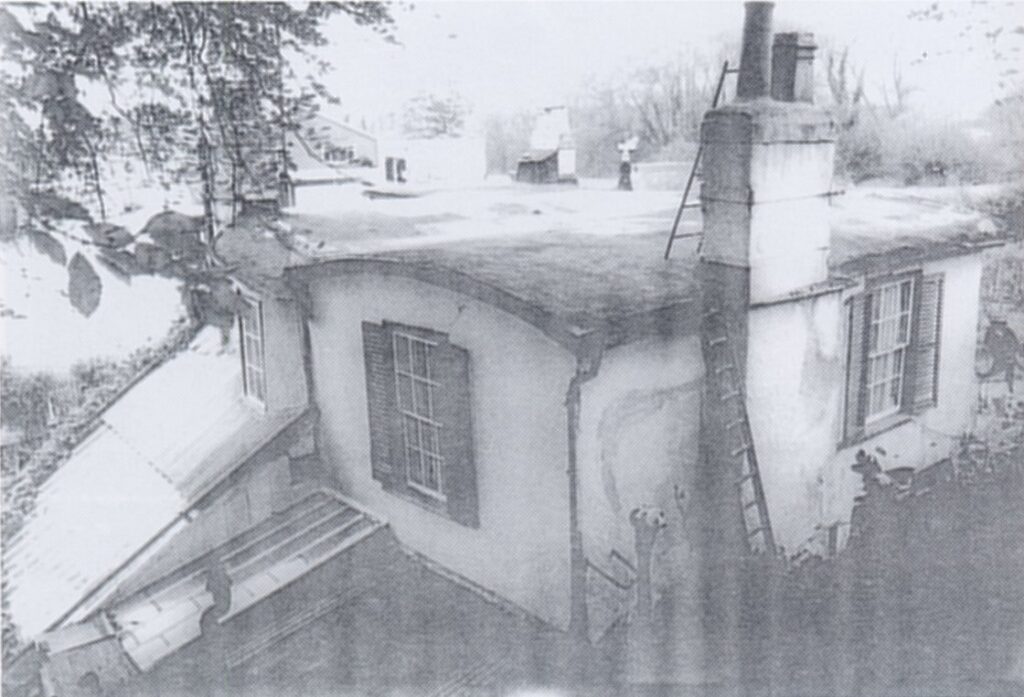
Paisley House in 1953 – with its low pitched paper roof was considered picturesque at the time. Images from Rob Kinchin Smith and the Oxford Archaeological Unit’s report ‘Paisley House: An Investigation of a Victorian Paper House’.
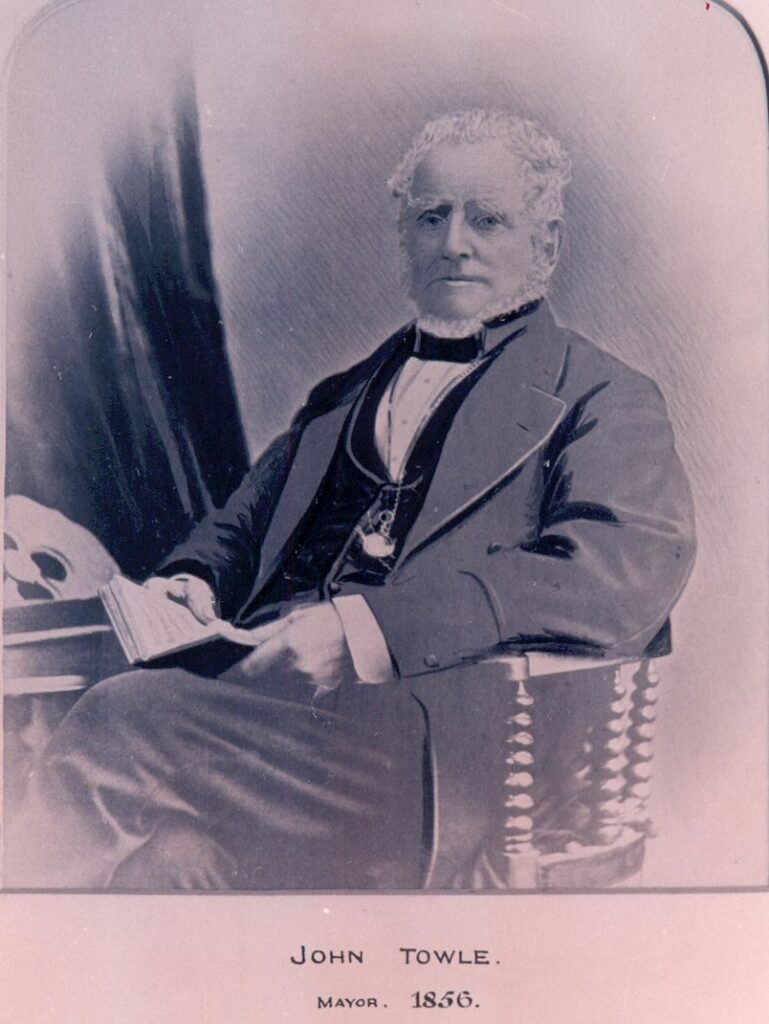
A portrait of John Towle when he became Mayor of Oxford in 1856. Courtesy of Oxford City Council
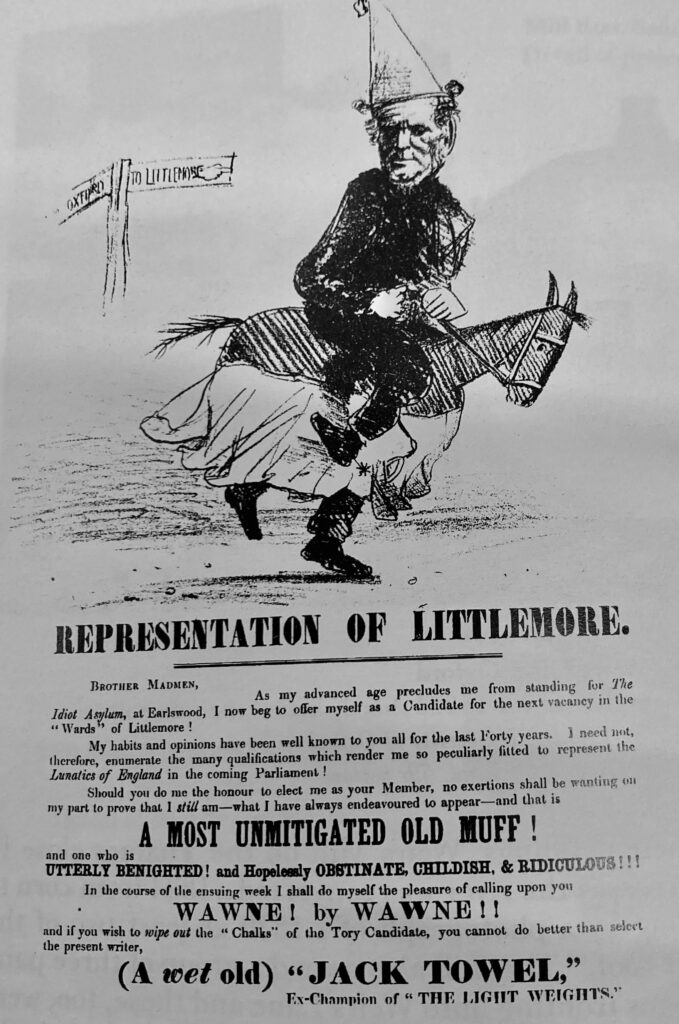
Political lampoon on John Towle, after he was elected as Oxford’s first non conformist Alderman. Centre for Oxfordshire Studies, Oxfordshire County Council
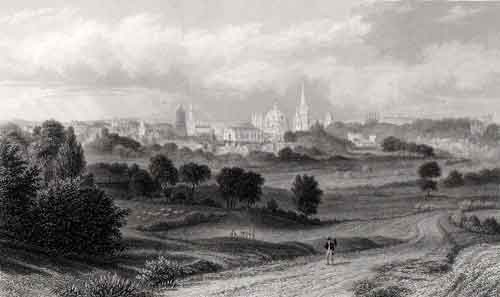
‘View of Oxford from the Abingdon Road’ in about 1836 by Frederick Mackenzie
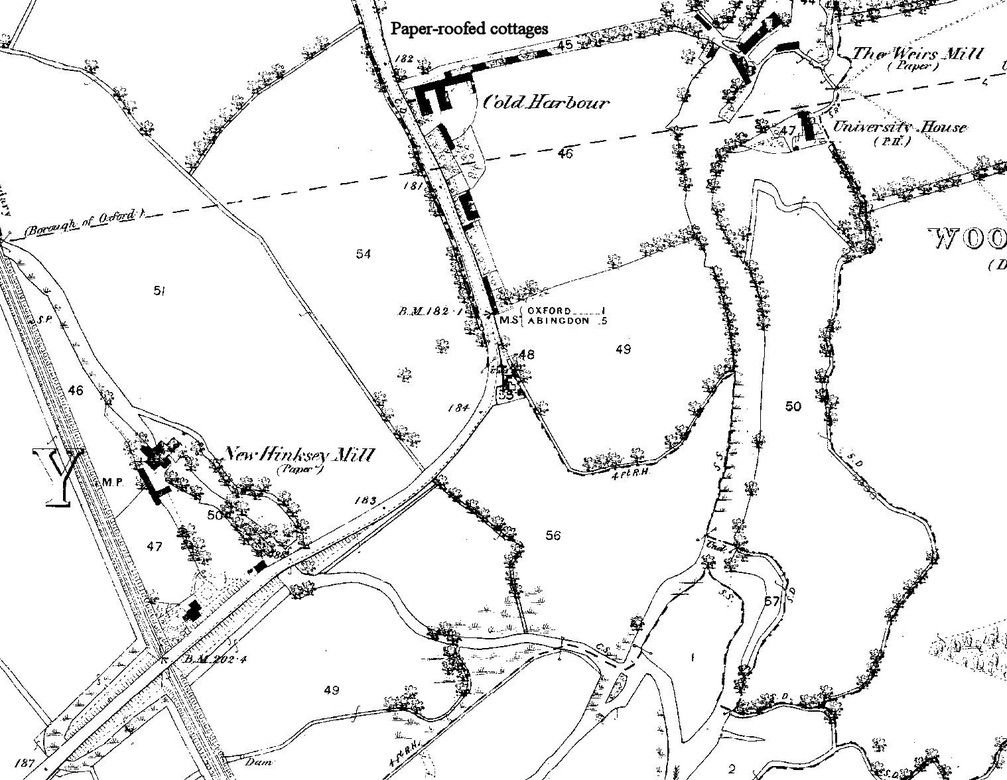
Extract from an OS map from 1878 showing Towle’s two paper mills at New Hinksey and Weirs Lock. His paper house is shown by the shaded block to the south of Hinksey Mill, above where is says BM 202.4
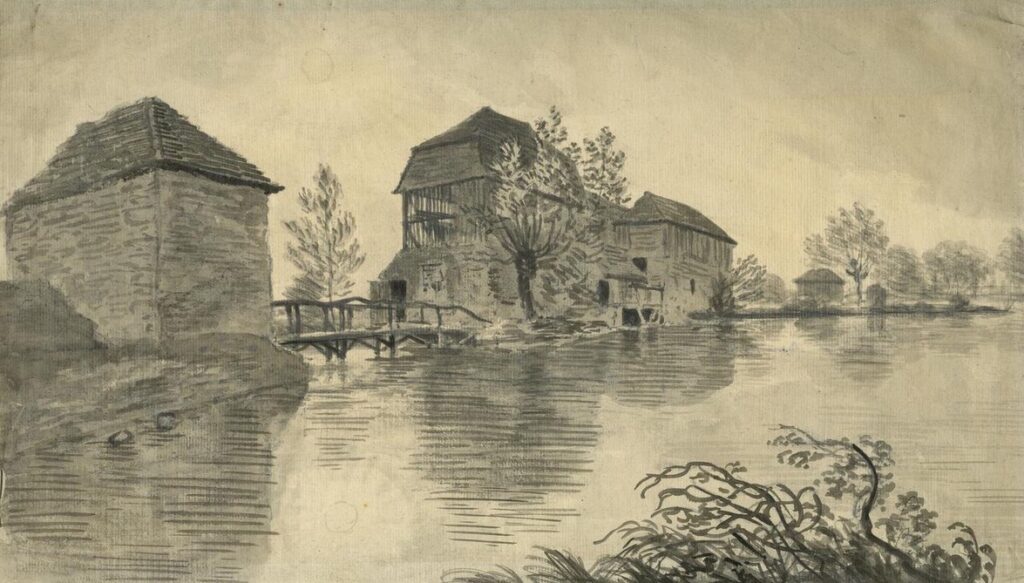
‘The Paper Mill at The Weirs near Oxford’ by Dr William Crotch (1775-1847) Norwich Castle Museum and Art Gallery, Norfolk Museums Service.
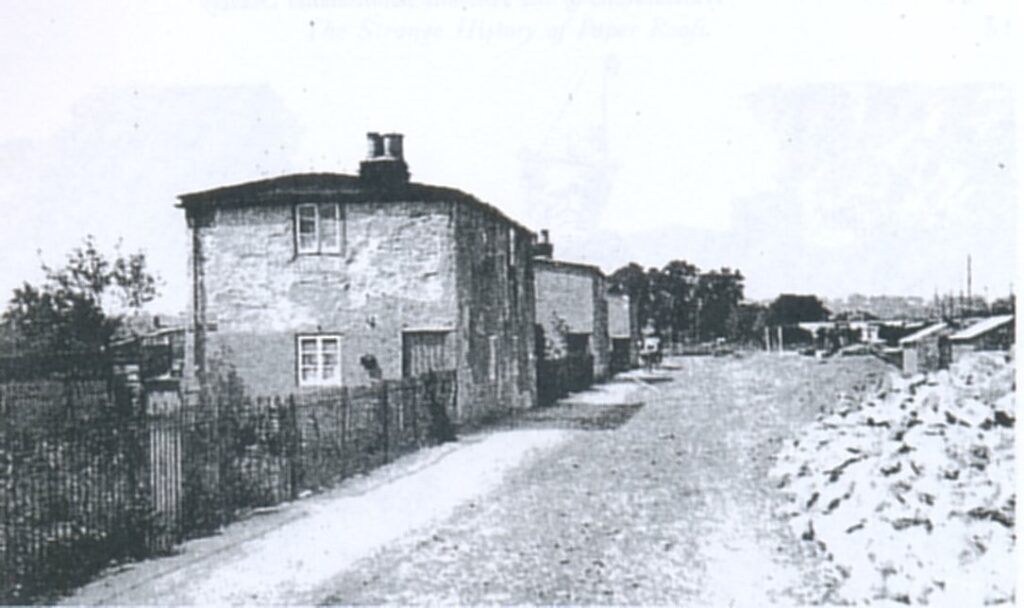
This picture taken around 1870 show cottages with paper roofs, probably built by Towle for workers at Weirs Paper Mill. They were demolished in 1923. The Bodleian Library MS Top Oxon d. 493, fol 59r bottom
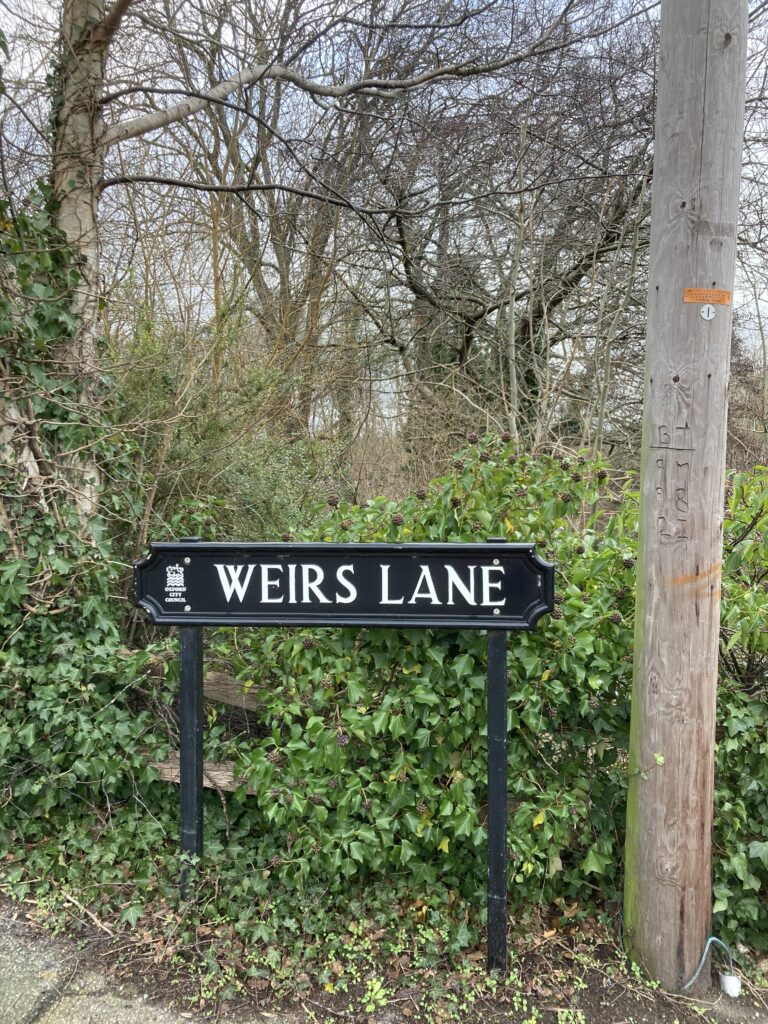
Weirs Lane now – off Donnington Bridge
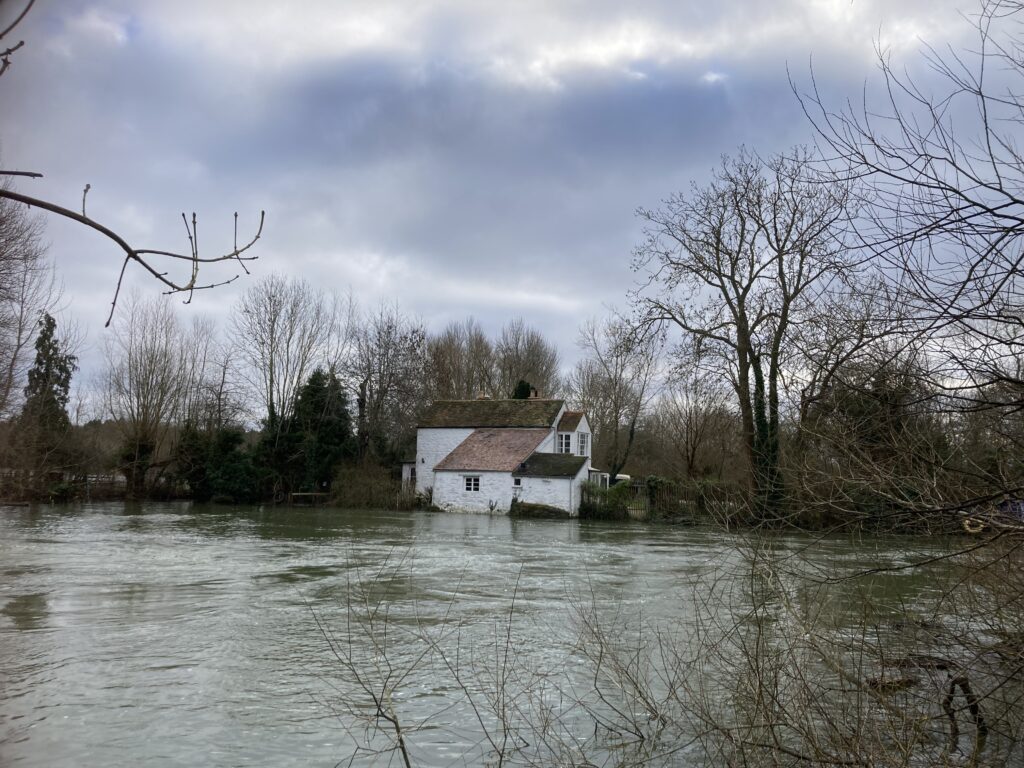
And the view from the end of the lane looking out from the weir when I visited last week during the floods.
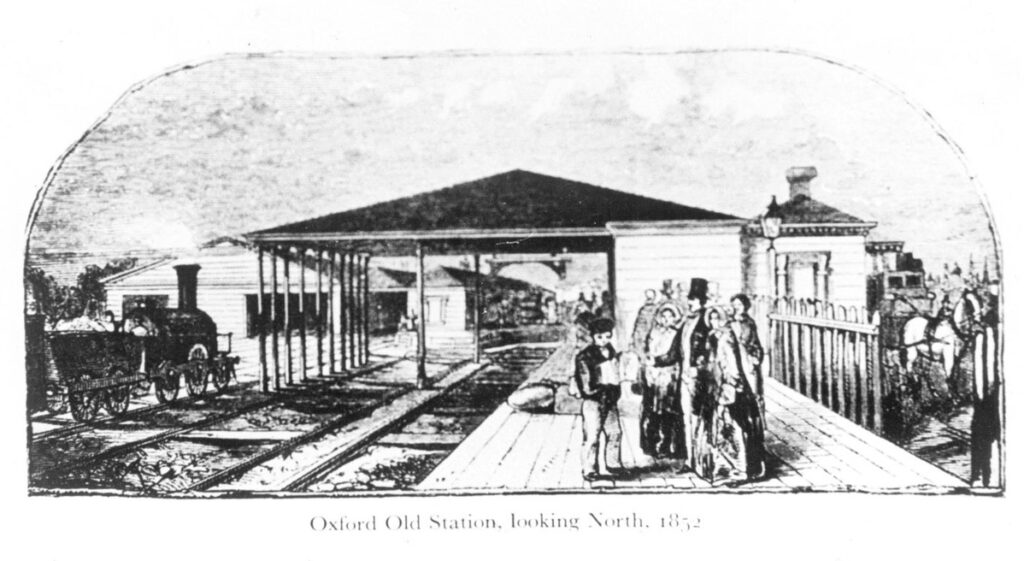
Oxford’s first station, built where Western Road meets Marlborough Rd in South Oxford.
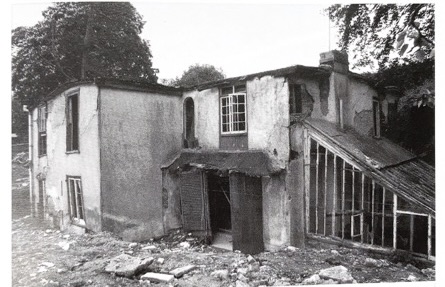
Paisley House in a sorry state taken in 1996 just before its demolition. You can see the railway embankment behind. Courtesy of Rob Kinchin Smith
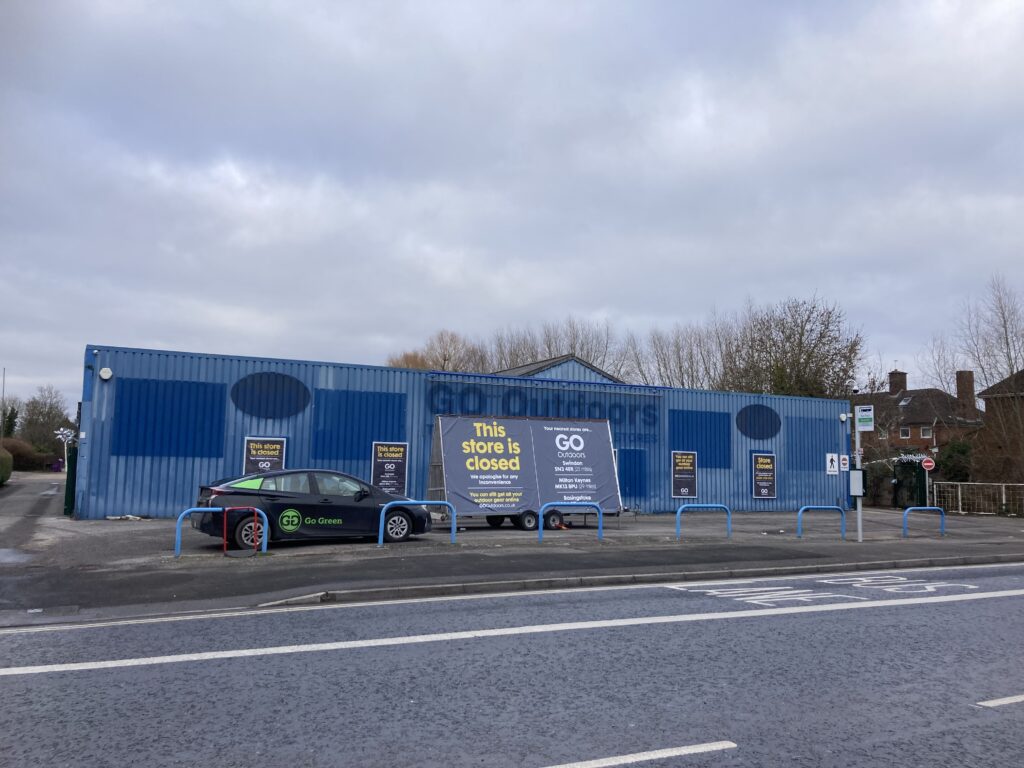
Hinksey Mill once stood on the stream running behind this now defunct warehouse
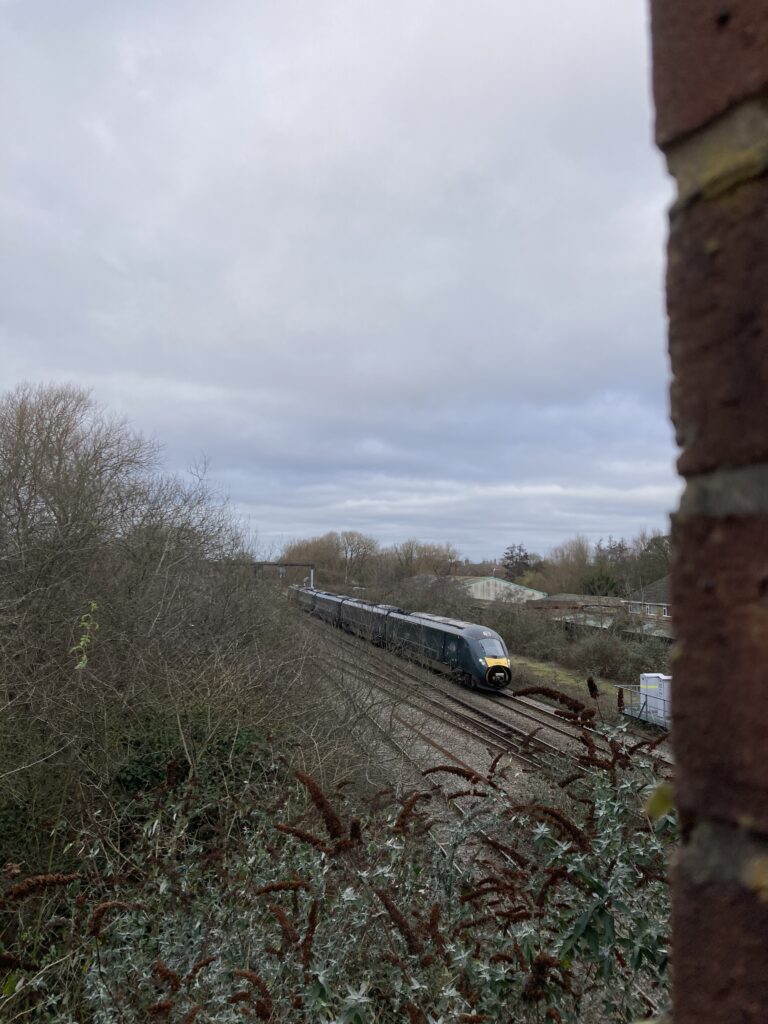
Looking down from Red Bridge today, opposite the Recycling Centre. Towle’s paper house would have stood roughly to the right of where the train whistles past in the goods yard of Milk and More.
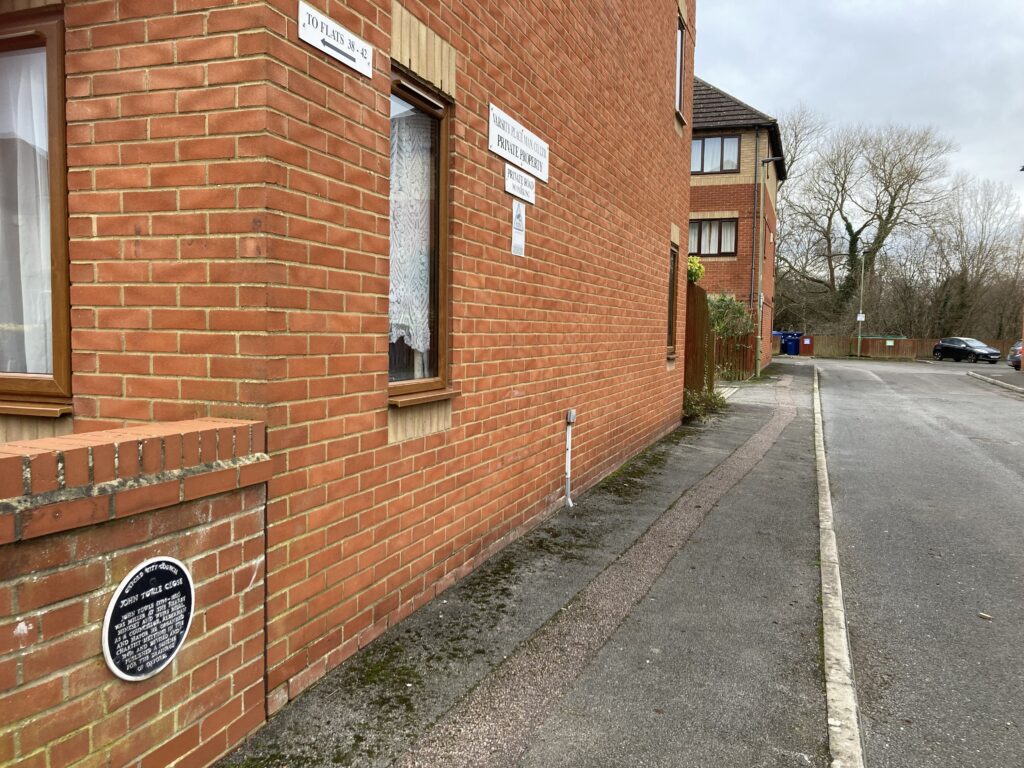
John Towle Close
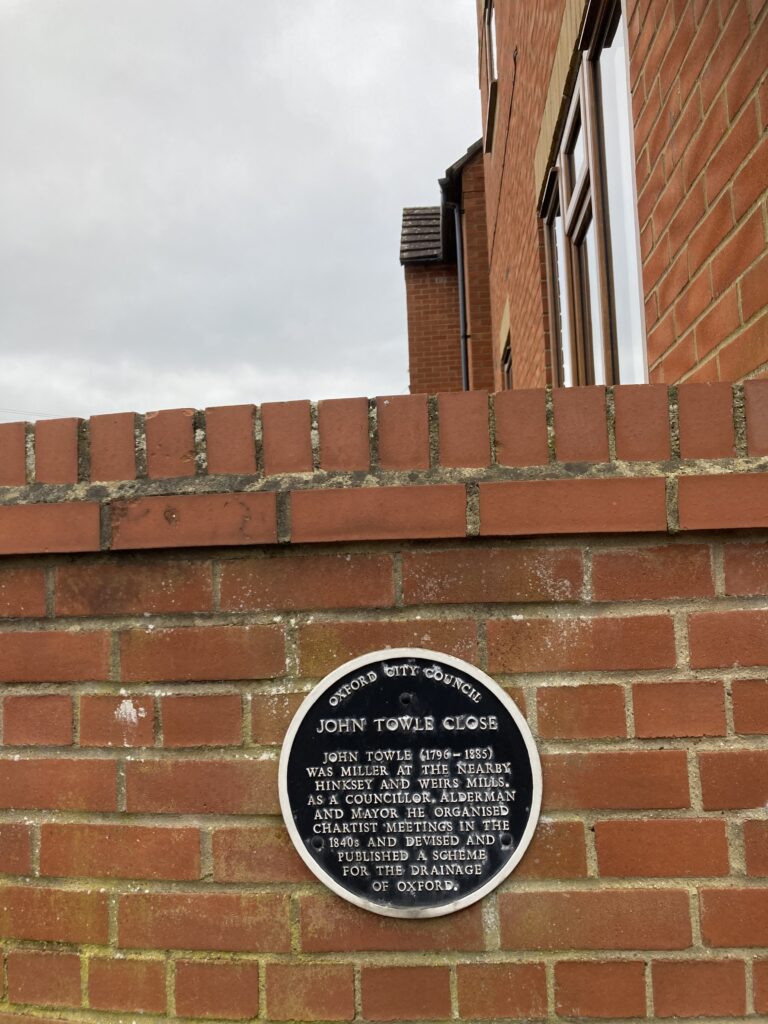
And his city plaque.
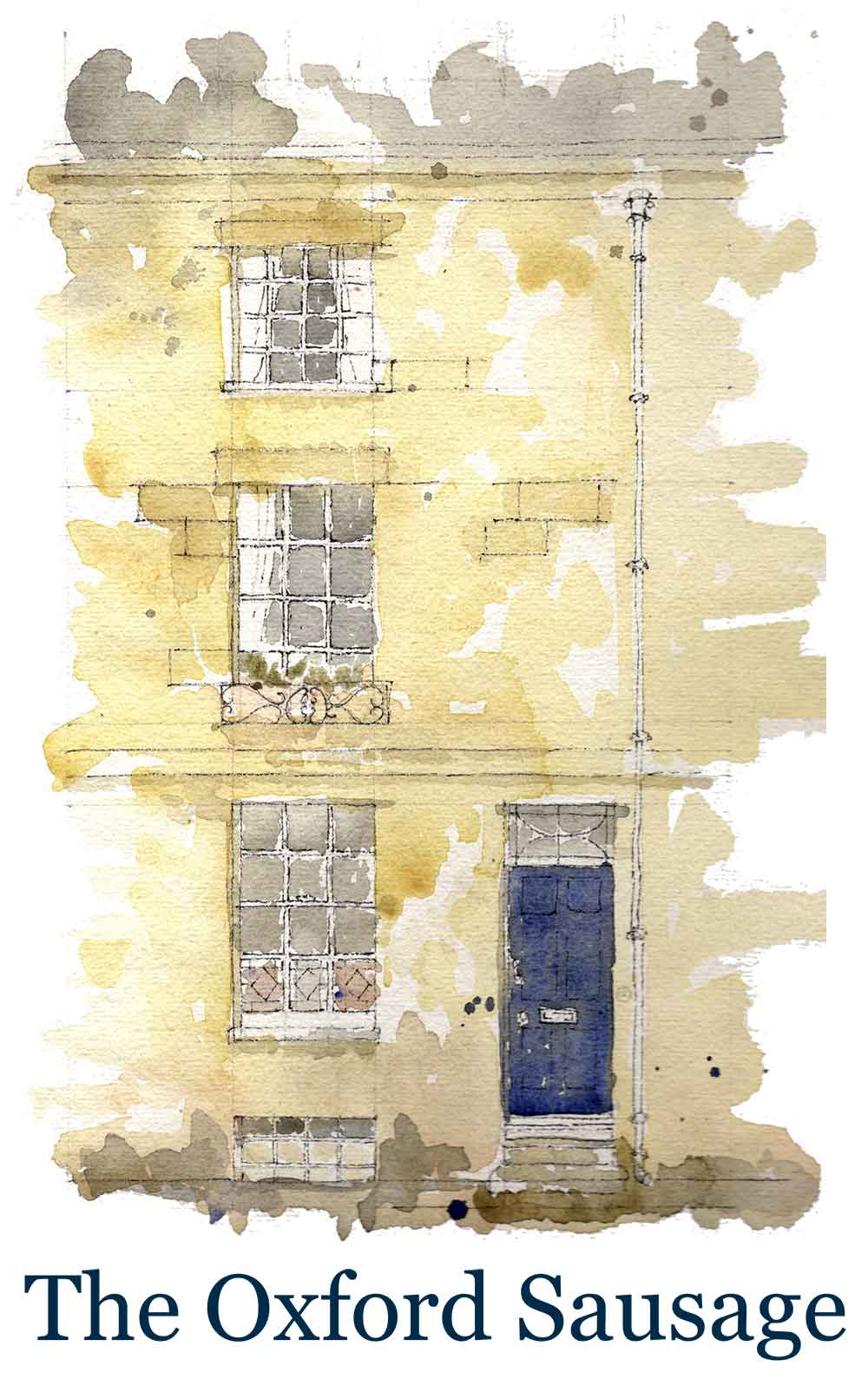
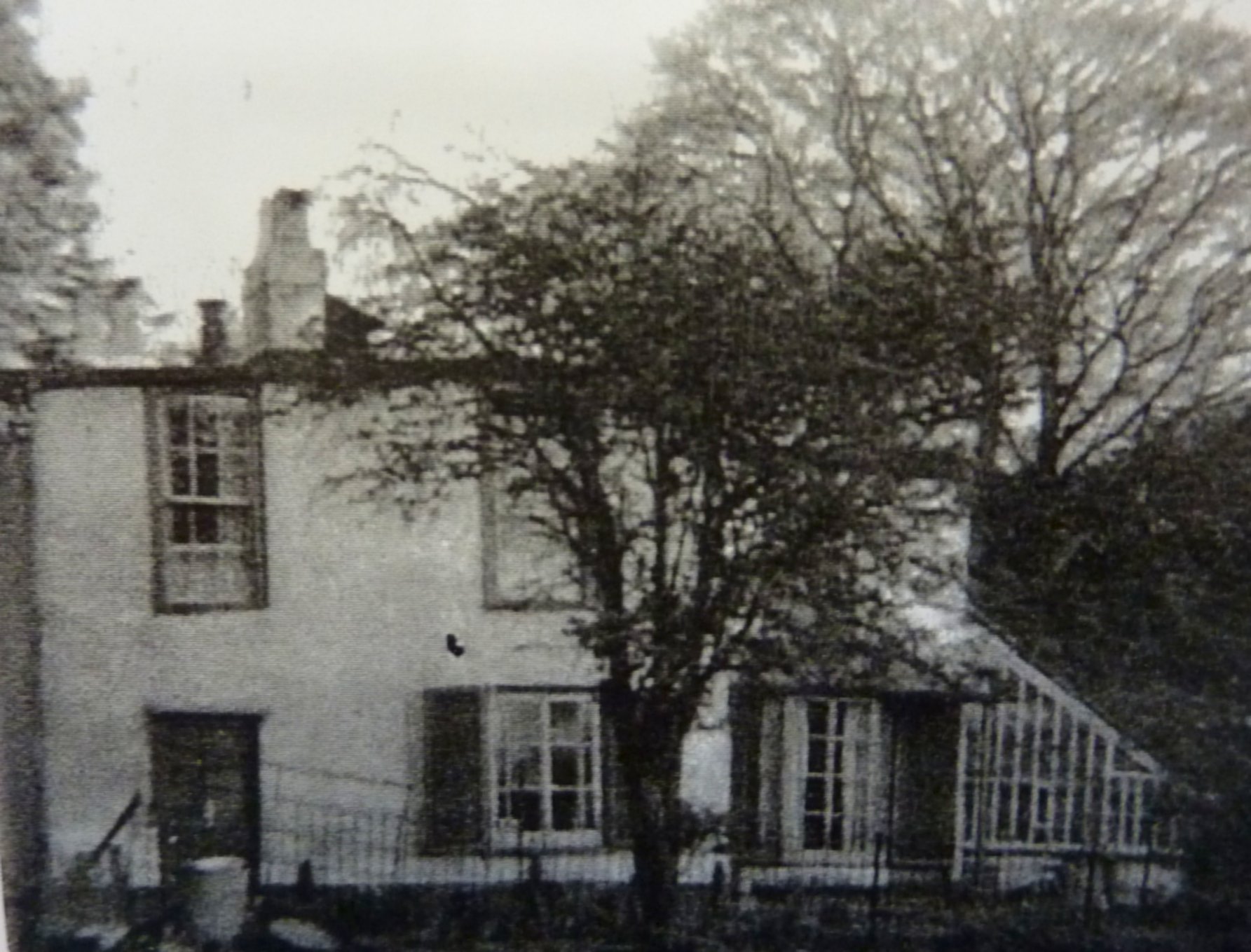
3 Comments
Join the discussion and tell us your opinion.
Wonderful piece! xxx
I visited the paper house many times,because my uncle Len had 2_rooms there for many years and Andrew Turner was our milkman. My uncle raised plants in the greenhouse there. He used to repair clocks and watches, and had a wonderful collection.He had the only Grandmother clock I have seen. It only had the hour hand, and the minute type divisions were only 4_instead of 5. Easier to guess time/minute fractions. I’m 95 now lived first of all in one of the ‘ saltboxes ‘. on Abingdon Road. m
arabella-what a fascinating and well researched piece of work this is.